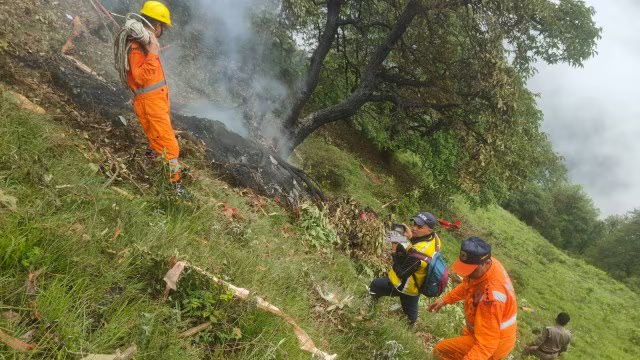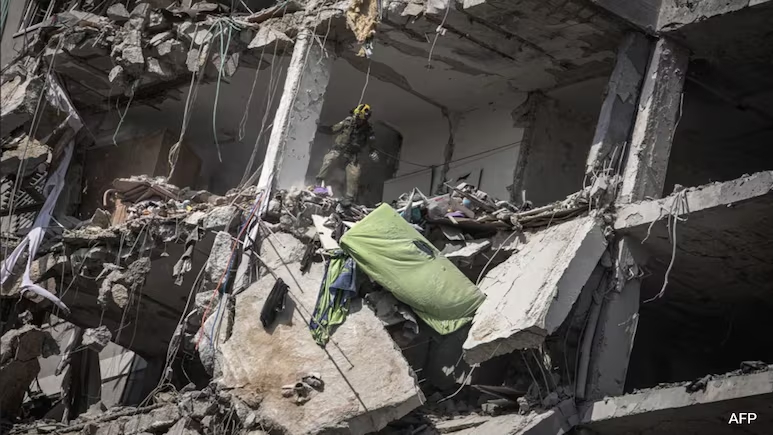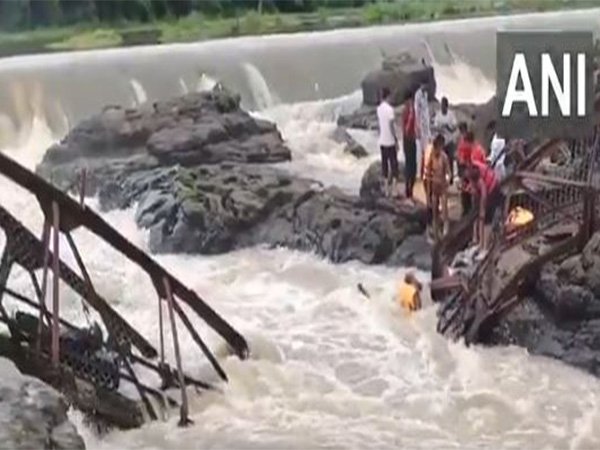A sacred flight turned catastrophic in Uttarakhand, India, as a helicopter crash claimed seven lives, including a 2-year-old child. The tragedy occurred during a pilgrimage journey to Kedarnath, exposing aviation vulnerabilities in one of India’s most spiritually and economically significant regions. As questions mount about safety, accountability, and operational standards, the incident has become a focal point of public mourning and policy attention.
Uttarakhand Helicopter Crash: A Tragedy Along the Pilgrimage Trail
A peaceful morning ride intended to ferry pilgrims across the holy Himalayas ended in tragedy as seven people died in a helicopter crash in Uttarakhand, India. The dead included a 2-year-old child and the pilot, and the crash was one of the deadliest air calamities in recent years on the revered Char Dham Yatra route. The crash touched off widespread grief, investigations and censure about flight safety in northern India’s high-altitude landscapes.
A Sacred Journey Cut Short
The helicopter, a Bell 407 model with the registration VT-BKA, belonged to Aryan Aviation and was heading from the temple town of Kedarnath to Guptkashi – crucial focal points of the Char Dham Yatra pilgrimage. The plane departed a little after 5:15 a.m. local time Sunday, with five passengers, one of them a child, and one crew member, the pilot.
Local authorities were alerted about a helicopter losing contact at around 05:00 AM on its way from Shri Kedarnath Dham. That silence soon became anxiety when, later, it emerged that the aircraft had crashed in Himalayan terrain around Gaurikund.
Immediate Response and Search Efforts
Upon receiving the alert, rescue squads rushed to the scene. The State Disaster Response Force (SDRF), local police, and district administration were working in tandem to bring bodies from the crash site. Griefstricken Uttarakhand Chief Minister Pushkar Singh Dhami wrote on social media platform X (earlier Twitter), describing the news as “very sad” and highlighting that the rescue and relief efforts are being conducted on a war footing.
The crash was confirmed by Ministry of Civil Aviation in India and it was stated that Aircraft Accident Investigation Bureau (AAIB) had initiated a formal inquiry into the flight incident. The Directorate General of Civil Aviation (DGCA) said that the casualties of the crash were confirmed and that the probe will investigate the circumstances that led to the devastating crash in one of India’s most high-profile landing zones.
Victims of the Crash
The identities of all the victims were not immediately released, but officials said at least one was a 2-year-old child. They haven’t released the identity of the pilot. Other than the pilgrims whose piety brought them to the Kedarnath temple, a shrine sitting at about 11,700 feet in the Himalayas, were survivors.
Among the tasks assigned to the Rudraprayag District Administration were to liaise with the next of kin of the deceased and repatriate the bodies back to their home states.
An Increasing Pattern of Mishaps
This is not a unique tragedy.
- There have been three emergency landings and two crashes in a month and a half on the Char Dham Yatra route.
- Bansidhar Tripathi, Uttarakhand’s Director-General of Information, confirmed the statistics.
These figures reveal an alarming trend of aviation disasters in the region, prompting important questions on the safety regulations, aircraft maintenance and the readiness of pilots to navigate in such a hostile terrain.
The mountainous area of Uttarakhand is especially vulnerable to rapidly changing weather patterns, high winds and poor visibility, all of which can affect safe flying. Add to that an uptick in traffic from pilgrim demand, and the stakes multiply.
Read more, The Silent Strength of Fathers: A Heartfelt Tribute to the Unsung Heroes at Home
Government Action and Operational Suspension
Following the crash, Chief Minister Dhami called a high-level meeting of senior officials and directed that all helicopter services flying along the Char Dham way be banned till Monday. He stressed that the service would be restored only after extensive safety reviews, including meetings with all helicopter operators and a look at every pilot’s flying experience in the high-altitude Himalayan region.
Dhami made it clear that a fresh and stringent SOP would soon be made applicable on the helicopter operations in the state. Among the changes planned are:
- Setting up an integrated command and coordination centre in Dehradun for round-the-clock data collection on the movement of choppers and safe flying operations.
- Evaluating the experience and certification of all helicopter pilots flying in high-altitude areas.
- Centrally integrating the aviation, meteorological, emergency and pilgrimage planning staff.
“The lapse, whatever has happened at whatever level, we will track and punitive action will be taken,” an assertive Dhami said indicating accountability at both the regulatory and operational level.
A Booming Industry Under Scrutiny
The tragedy has also turned the spotlight on the increasing helicopter service in the religious tourism of Uttarakhand. Each year hundreds of thousands of pilgrims travel to the four holy places of Badrinath, Gangotri, Yamunotri and Kedarnath which are situated in the Himalayas. Although some continue to make the painful pilgrimage on foot, an ever growing number are now taking helicopter rides to the shrines with greater speed and comfort.
Increasing demand has coincided with an increase in the number of charter companies that offer rapid transport of pilgrims, in some cases favoring comfort over safety. For those who can afford them, though – and especially for the elderly and people with health problems – helicopter services are a godsend, and the staircases a hardship. But with more and more flights, and the region’s difficult topography and unpredictable mountain weather, small failures can have tragic consequences.
The Bigger Picture: Finding a Harmony Between Accessibility and Safety
The Char Dham Yatra, however, is more than a religious circuit – it is a financial lifeline for the economy of Uttarakhand, propelling everything from small hotels to transportation businesses. Halicopter services has become the modern take on a journey that people have been making for centuries, and it’s opened it up to a bigger audience.
Still, this is a grim reminder of the struggle between protecting and enabling. Safety protocols, pilot training, checks on aircraft and monitoring of flight paths would all need to be ramped up at the same time as the infrastructure capacity, experts say.
The aviation regulator is being asked to revisit the model under which operators work in hill states, especially the ones that are characterized by harsh weather conditions and high-altitude geography. This consists of improving monitoring and ensuring compliance especially during the high pilgrimage season.
Mourning and Moving Forward
The feeling in Uttarakhand is one of grief, introspection, resolve. As families grieve and officials probe what went wrong, the incident has turned into a bitter reminder of how fragile life is, even when you’re on a spiritual journey.
There have, of course, been positive signs – Kumaon’s new Chief Minister Dhami acted swiftly on relief and rescue mobilisation, announced a pending investigation and operational reforms, purportedly the start of what was so badly missing. But the knives now turn on implementation – on making sure the promises made in the aftermath of tragedy are not receding in the rearview mirror when the news cycle moves on.
Meanwhile, the state government is providing assistance to the families of the victims of the crash, and the bodies have been sent to their home states for the final rites. Pilgrims and local residents in the wider community have a close watch on the developments in expectation of some accountability and a safer sky.
Also read, Miraculous Survival in Deadly Plane Crash: One Passenger Found Alive
Conclusion
The Kedarnath helicopter crash is an unfortunate chapter in a journey that should have been spiritual and peaceful. It also laid bare new vulnerabilities of a fast-growing religious aviation sector and the imperatives for stronger oversight, more careful planning and firmer enforcement of safety standards.
Seven lives, including that of a child and a pilot, were lost not only to an accident but perhaps to systemic problems that must be urgently addressed. As Uttarakhand suspends its helicopter operations and takes stock, the rest of the country has to ponder how to blend faith, technology and safety in a manner that does justice to both devotion and life.
Pilgrimage is a matter of faith, but faith has to be safeguarded with responsibility. The mountains won’t stop calling, but those who manage the routes they offer – on the ground, and in the sky – have an obligation to ensure that routes to the divine don’t become highways to despair.
FAQs
What caused the Uttarakhand helicopter crash?
The exact cause is under investigation by the Aircraft Accident Investigation Bureau (AAIB). Authorities are reviewing weather conditions, pilot records, and mechanical factors.
How many people died in the crash?
Seven people died, including a 2-year-old child and the pilot. All passengers were traveling from Kedarnath to Guptkashi.
What actions has the Uttarakhand government taken?
All helicopter services on the Char Dham route were suspended. A strict SOP was ordered, pilot experience is being reviewed, and a command center is being set up in Dehradun.
Why is there concern about helicopter safety in the region?
There have been three emergency landings and two crashes in just 45 days. Mountainous terrain, unpredictable weather, and increasing traffic make the region particularly risky.
Will helicopter services resume soon?
They will only resume after meetings with all operators, thorough safety reviews, and verification of pilot credentials in high-altitude flying.
Reference
Stay updated with all the latest news and insights – News Of US






